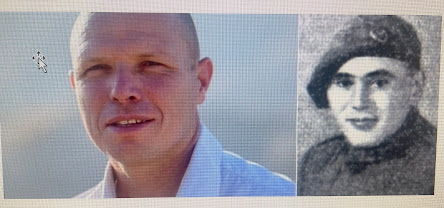Rabbi Shlomo Riskin relates an encounter with a congregant who was not observant. The man would reassure the rabbi of his commitment to Judaism by saying, “Rabbi, I don’t keep the rules, but I have a Jewish heart.” Rabbi Riskin replied, “I am worried about the strain on your heart. Perhaps, let other parts of your body take on some Jewish responsibility. Use your mouth to pray and keep kosher. Put tefillin on your arm and head. Use your legs to walk to Shul…”
A Jewish heart. A Yiddishe kop – A Jewish head or mind. A pintele Yid – the Jewish soul. The parsha introduces us to another kind of Jewish organ: the wise heart.
"V'ata tedabeir el kol chachmei leiv...v'asu et bigdei Aharon - And you (Moses) shall speak to all of the wise hearted people...and they shall make the garments for Aaron..." (Shemot 28:3)
Hashem specifically instructed Moses to command the wise of heart to make these special garments for Aharon and his sons. We are accustomed to associating wisdom with the brain. Why does the Torah emphasize a wise heart?
Rabbi Riskin is on to something. We need to find a way to channel our intelligence into our emotions and infuse emotion into our intelligence.
1) Smarts are not enough
Rabbi Leib Chasman, a Yeshiva head in prewar Europe, explained that our understanding of wisdom represents a fundamental flaw in human thinking. From the Torah's perspective, a wise person is not merely a Harvard professor who is able to intelligently discuss esoteric topics and difficult academic subjects. If their actions don't reflect their sophisticated intellectual knowledge, the facts and theorems stored in their head are essentially meaningless.
Rabbi Norman Lamm put it this way: Wisdom without conscience yields to misuse of knowledge. The atom bomb was an ingenious invention, but it led to horrific destruction. Man was able to decipher the “nature of the atom but neglected the nature of the sons of Adam.”
The Torah recognizes that the primary criterion for determining wisdom lies in the ability to connect one's mind, and the information stored therein, with the heart, which guides and determines actions. It is for this reason that Hashem stressed the importance of selecting the truly wise - the wise of heart.
2) We must think outside the box
We sometimes get stuck in our
thinking. For example, we expect things to look a certain way. Think about how
we picture a tzaddik, Jewish sage. With a beard? Holding a book?
Davening? A wise heart looks deeper.
Alan Watts, a popular writer
on Eastern religion, offered a keen insight: “The most spiritual people are the
most human. They are natural and easy in manner; they give themselves no airs:
they interest themselves in ordinary everyday matters, and are not forever
talking and thinking about religion. For them, there is no difference between
spirituality and usual life…” (“The Supreme Identity”, p. 128).
The Jewish tradition references the idea of 36 nistarim, hidden righteous individuals who allow the word to exist. Rabbi Marc Angel explains they are hidden because the truly righteous are too modest to imagine that they are among this group of tzaddikim. It might be the person sitting next to you…
3)
Wisdom is only genuine when accompanied by caring
Teddy Roosevelt said, “Nobody cares how much you know until they know how much you care.”
Knowledge is something for which we have passion and wish to use to share with others or benefit them.
We value information, the mind, and wisdom. At the same time, as the Talmud teaches, “rachmana liba ba’ee – God wants the heart.” Our mission is to fuse both to create wise hearts.
These days, we are bombarded with information as we follow events in Israel. At the same time, our hearts are broken by the stories of heroism, widows and orphans left behind, and tremendous need. I don’t worry as much about our minds. We absorb plenty of information, news articles, and opinion pieces – probably more than enough. I think we need to lead with the heart.
In connection with this week’s parsha and the project of the bigdei kehuna, priestly garments, I came across an expression which resonates deeply: “Wear your heart on your sleeve and your people on your heart.” Wise hearts are needed more than ever as we daven, care, donate and show our love for Israel and the Jewish people.



